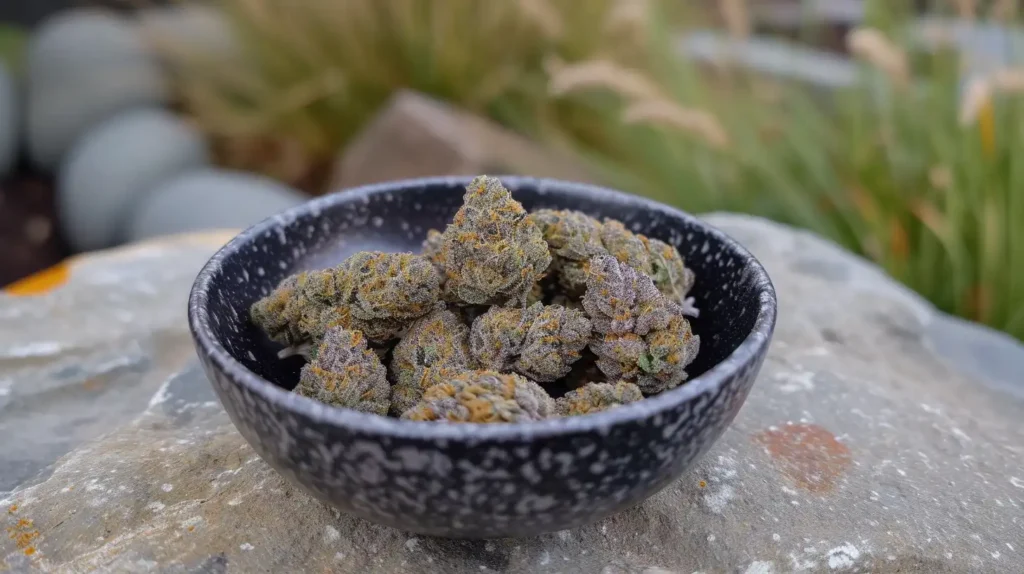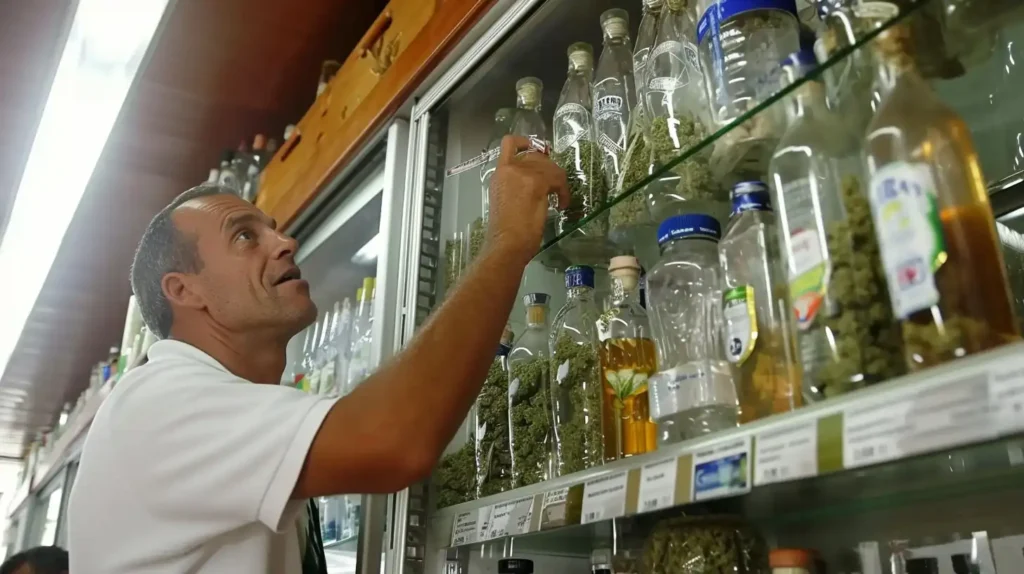Cannabis Tourism Implications
Cannabis tourism has emerged as a significant trend, sparking discussions about its impact on local economies, societies, and the environment. This article delves into the multifaceted effects of cannabis tourism, exploring its historical roots, economic implications, social dynamics, and environmental considerations. From job creation and increased revenue for local businesses to changes in community culture and environmental sustainability, this comprehensive analysis aims to shed light on the far-reaching consequences of cannabis tourism.
We will examine the regulations and policies governing this burgeoning industry, as well as strategies for communities to mitigate any adverse effects. Join us as we navigate the complex terrain of cannabis tourism and unravel its implications for local communities.
Key Takeaways:
- Cannabis tourism creates job opportunities in local communities, boosting the economy and providing financial stability for residents.
- Increased revenue for local businesses can lead to further investment in the community, improving infrastructure and services.
- Communities must carefully consider and regulate cannabis tourism to mitigate potential negative impacts on the environment, culture, and residents.
What Is Cannabis Tourism?
Cannabis tourism involves travel and exploration centered around the cannabis culture, including visits to cannabis-friendly destinations, guided tours of cannabis-related facilities, and participation in cannabis-themed events and activities.
It offers a unique opportunity for enthusiasts to immerse themselves in the world of cannabis, gaining insights into its production, consumption, and history. From visiting cannabis dispensaries and cultivation facilities to indulging in cannabis-infused culinary experiences, Cannabis Tourism provides a diverse range of activities. Travelers can engage with local experts and fellow enthusiasts, fostering a sense of community in the shared appreciation of cannabis. This emerging trend has contributed to the development of specialized tour operators and accommodations, catering specifically to cannabis enthusiasts.
History of Cannabis Tourism
The history of cannabis tourism dates back to the emergence of legalized cannabis markets, with early adoption seen in regions that pioneered cannabis legalization, such as the Netherlands and certain states in the United States.
These regions laid the foundation for the growth of cannabis tourism, attracting enthusiasts and entrepreneurs who were eager to explore the possibilities of this newly legalized industry. As the market expanded, so did the appeal of visiting locations where cannabis could be legally enjoyed. This led to the development of comprehensive cannabis tourism experiences, including guided tours of cannabis farms, dispensaries, and consumption-friendly accommodations.
The exploration of cannabis tourism has evolved beyond mere consumption, with visitors seeking education, cultural exchange, and wellness experiences rooted in cannabis traditions. The historical journey of cannabis tourism showcases the intersection of evolving legislation, entrepreneurial spirit, and the increasing acceptance and curiosity surrounding the cannabis industry.
What Are the Economic Impacts of Cannabis Tourism?
Cannabis tourism has brought significant economic impacts to various destinations, including job creation, increased revenue for local businesses, and a notable boost in the tourism industry.
By offering opportunities for new employment, cannabis tourism plays a pivotal role in contributing to the job market. The revenue generation from cannabis-related activities such as dispensaries, tours, and accommodations significantly enhances the local economy.
The surge in tourists attracted by cannabis tourism not only contributes to the income of local businesses but also leads to an increased demand for a wide range of services, from hospitality to transportation, further enhancing the economy.
Job Creation
Cannabis tourism has contributed to job creation in various sectors, including hospitality, tour operations, and retail, providing employment opportunities for local residents and stimulating economic growth.
The rise of cannabis tourism has not only offered new avenues for employment but has also bolstered the economy by promoting local job opportunities. In the hospitality industry, the demand for accommodation, food, and beverage services has surged, leading to an increased need for staff members across various roles, such as hotel management, chefs, and customer service. Tour operators have flourished, creating employment openings for tour guides, transport personnel, and administrative staff to manage the influx of visitors eager to explore cannabis-related attractions and experiences.
Increased Revenue for Local Businesses
Cannabis tourism has led to increased revenue for local businesses, including accommodations, dining establishments, and souvenir shops, driving growth and sustaining the local economy.
The rise in cannabis tourism has presented a valuable opportunity for various sectors within the local economy to thrive. Accommodations, such as hotels and bed-and-breakfasts, have experienced a significant uptick in bookings as a result of the influx of cannabis enthusiasts seeking comfortable lodging. Likewise, dining establishments have seen a surge in patronage, with tourists eager to explore local culinary offerings. The retail sector, particularly souvenir shops and dispensaries, has also reaped the benefits, as visitors seek unique mementos and cannabis-related products.
Boost in Tourism Industry
Cannabis tourism has contributed to a significant boost in the overall tourism industry of specific regions, attracting visitors and driving consumer spending, thus elevating the area’s prominence as a tourist destination.
This form of tourism has encouraged the creation of cannabis-friendly establishments and bespoke experiences, catering to a niche market segment and fostering a unique appeal for the destination. The economic infusion from cannabis tourism bolsters various sectors, from hospitality to retail, and often leads to diverse employment opportunities within the local community. The emerging trend of cannabis-infused travel experiences has the potential to redefine traditional tourism offerings, infusing novelty and excitement into the travel landscape.

What Are the Social Impacts of Cannabis Tourism?
Cannabis tourism has brought forth various social impacts, including changes in community culture, fluctuations in crime rates, and implications for local residents, influencing the social fabric of the destinations.
The rise of cannabis tourism has introduced new dynamics to the social landscape of many destinations, with a noticeable shift in community behaviors and social interactions. As cannabis tourism gains momentum, it has elicited mixed responses from local residents and authorities, triggering conversations about its effects on the cultural identity of the communities.
The correlation between cannabis tourism and crime rates remains a subject of debate, as some argue that it fosters a safer environment with increased monitoring, while others express concerns about potential issues arising from the tourism influx. The push and pull between these perspectives have become integral to the ongoing discourse on the social impact of cannabis tourism.
Changes in Community Culture
Cannabis tourism has contributed to noticeable changes in the community culture of certain destinations, influencing social norms, entertainment offerings, and local traditions.
The emergence of cannabis tourism has sparked a shift in the social landscape, with a growing acceptance and integration of cannabis into daily life. Local businesses have adapted, offering specialized tours, cannabis-friendly accommodations, and unique recreational activities. This shift has not only expanded the entertainment options in these communities but has also challenged traditional customs, encouraging a more open-minded approach to cultural practices.
Increased Crime Rates
Cannabis tourism has been associated with fluctuations in crime rates in certain destinations, prompting discussions about law enforcement, public safety, and regulatory measures to address these concerns.
Local authorities in areas with burgeoning cannabis tourism have noted an uptick in various crime activities, ranging from petty theft to more organized criminal behavior. This has raised significant challenges for law enforcement, particularly in regions where cannabis consumption is legal, but the regulatory framework for cannabis tourism is still evolving.
The potential correlation between cannabis tourism and increased crime rates has led to debates about the need for stricter regulations to mitigate any adverse effects on public safety. Proponents of these regulations argue that it is essential to address potential social ramifications, including the negative impact of crime on the overall tourism industry.
Impact on Local Residents
Cannabis tourism has had varied impacts on local residents, influencing their daily lives, economic opportunities, and perceptions of their community’s identity and values.
Many local residents have seen changes in the landscape of their neighborhoods, with new cannabis-centric businesses popping up and attracting tourists from far and wide. Cannabis tourism drives economic growth, but with it comes concerns about the preservation of the local way of life.
The influx of tourists has prompted adjustments in daily routines, as residents navigate through increased traffic and altered social dynamics. The cannabis tourism industry also brings forth opportunities for entrepreneurship, employment, and investment in the local economy, but it may also lead to disparities in wealth distribution and housing accessibility.
With these changes, the community’s identity may evolve, shaping perceptions of the neighborhood and impacting the values and traditions that have long been upheld by local residents. Navigating the delicate balance between embracing the economic benefits and preserving the essence of community life presents a challenge for those directly affected by the cannabis tourism phenomenon.
How Does Cannabis Tourism Affect the Environment?
Cannabis tourism holds implications for the environment, encompassing considerations related to water usage, waste management, and the carbon footprint, necessitating sustainable practices and environmental stewardship.
Water usage in cannabis tourism is a significant concern, as cannabis cultivation requires substantial amounts of water. With the increasing popularity of cannabis tourism, efforts to optimize water consumption and implement efficient irrigation methods become crucial. Waste management poses another environmental challenge, as the cannabis industry generates waste from packaging, processing, and production. Implementing proper waste disposal and recycling practices is essential in minimizing the environmental impact of cannabis tourism.
The carbon footprint of cannabis tourism should not be overlooked. The transportation of tourists, energy consumption in cannabis facilities, and the production of cannabis-related products contribute to carbon emissions. To mitigate this impact, it is imperative for the cannabis tourism industry to prioritize renewable energy sources, promote eco-friendly transportation, and adopt sustainable cultivation and production methods.
Water Usage
Cannabis tourism can influence water usage patterns in certain areas, necessitating attention to conservation measures, sustainable practices, and environmental impact assessments.
When cannabis tourism thrives, it can lead to an increased demand for water resources, which may strain local supplies. Therefore, it becomes crucial for the cannabis tourism industry to adopt sustainable water management practices. Through implementing water-saving technologies and engaging in water conservation efforts, the industry can mitigate its impact on the environment.
It becomes necessary to conduct regular environmental assessments to ensure that sustainable water usage practices are being maintained. By promoting responsible water consumption, the cannabis tourism sector can contribute to environmental conservation and support the long-term health of local ecosystems.
Waste Management
Cannabis tourism presents challenges and opportunities related to waste management, requiring strategies for waste reduction, recycling initiatives, and sustainable waste disposal practices.
When travelers engage in cannabis tourism, there is a notable impact on waste generation due to packaging materials, leftover cannabis products, and other by-products. Establishing recycling systems and advocating for environmentally conscious consumer behavior within this niche industry is paramount.
The demand for sustainable waste disposal practices necessitates the integration of cost-effective and eco-friendly methods to manage cannabis-related waste. As the cannabis tourism industry continues to grow, stakeholders are increasingly seeking innovative solutions to mitigate the environmental footprint, whether through partnerships with waste management entities or the implementation of sustainable disposal practices.
Carbon Footprint
Cannabis tourism can contribute to the carbon footprint of destinations, emphasizing the need for sustainability measures, eco-friendly transportation options, and environmental impact mitigation strategies.
The rising popularity of cannabis tourism has led to an increased demand for energy and resources, impacting the environment. Many destinations are implementing sustainable practices to offset this impact and reduce carbon emissions. This includes promoting eco-friendly transportation options such as electric vehicles, bicycles, and public transit to minimize the environmental footprint. Efforts are being made to integrate renewable energy sources and reduce waste in cannabis tourism establishments to further mitigate their carbon footprint. These initiatives not only benefit the environment but also enhance the overall sustainability of cannabis tourism experiences.
What Are the Regulations and Policies Surrounding Cannabis Tourism?
Cannabis tourism is subject to a variety of regulations and policies, covering aspects such as cannabis consumption, hospitality guidelines, and marketing restrictions, reflecting the legal frameworks governing such activities.
These regulations and policies differ significantly from one jurisdiction to another, influencing the development and operation of cannabis tourism businesses. In some regions, local ordinances may restrict the sale and consumption of cannabis, while others have embraced its legalization and have distinct rules for cannabis-related activities.
Certain governments have strict guidelines for hospitality venues that wish to incorporate cannabis offerings, requiring specific licenses and compliance with stringent safety and operational standards.
How Can Communities Mitigate the Negative Impacts of Cannabis Tourism?
Communities facing negative impacts from cannabis tourism can employ mitigation strategies, including community engagement, regulatory adjustments, and sustainable development initiatives, to address and manage the challenges effectively.
One effective approach for communities dealing with the negative impacts of cannabis tourism is to foster active community engagement. By involving local residents, businesses, and stakeholders in discussions and decision-making processes, communities can gain valuable insights and diverse perspectives.
It is essential to consider regulatory adjustments that align with the unique needs of the community. This may involve establishing zoning regulations, licensing requirements, and consumption guidelines to ensure that cannabis tourism operates responsibly within the community.
Frequently Asked Questions
1. What is cannabis tourism and how does it impact local communities?
Cannabis tourism refers to travel and leisure activities centered around the consumption and/or production of cannabis. This can include visiting cannabis farms, cannabis dispensaries, and participating in cannabis-related events. The impact of cannabis tourism on local communities can be both economic and social, as it can bring in revenue and also change the cultural landscape of the community.
2. How does cannabis tourism generate economic benefits for local communities?
Cannabis tourism can bring in significant economic benefits for local communities through increased tourism and spending. Cannabis tourists often stay in hotels, eat at local restaurants, and purchase souvenirs and other goods, which can boost revenue for local businesses. Additionally, the production and sale of cannabis products can create jobs and stimulate economic growth in the community.
3. What are some potential social impacts of cannabis tourism on local communities?
Cannabis tourism can also have social impacts on local communities, both positive and negative. On one hand, it can bring in new cultural experiences and diversity, as well as promote education and understanding about cannabis. On the other hand, it can also lead to increased drug use, strain on public services, and potential conflicts between tourists and local residents.
4. How can local governments regulate and manage the impact of cannabis tourism?
Local governments can regulate and manage the impact of cannabis tourism through various measures such as implementing zoning laws, setting restrictions on advertising and marketing, and establishing guidelines for responsible consumption. They can also work with local businesses and community organizations to ensure that the benefits of cannabis tourism are balanced with the needs and concerns of the community.
5. What are some potential challenges for local communities in embracing cannabis tourism?
One of the main challenges for local communities in embracing cannabis tourism is overcoming stigma and negative perceptions surrounding cannabis. This can also lead to resistance from local residents and businesses who may not want to be associated with the industry. Another challenge may be finding a balance between promoting cannabis tourism and protecting the community’s values and interests.
6. Can cannabis tourism have a long-term positive impact on local communities?
While the impact of cannabis tourism on local communities may vary, there is potential for long-term positive effects. With proper regulation and management, cannabis tourism can bring in sustained economic benefits and promote cultural exchange and understanding. It can also contribute to destigmatizing and normalizing cannabis, leading to potential benefits for the industry and the community in the long run.
Dive into the intriguing world of Cannabis Tourism Implications with our newsletter. We bring you a comprehensive exploration of its effects on local economies, societies, and the environment. Understand the historical context, economic benefits, social changes, and environmental challenges. Subscribe now to stay informed about the latest developments and strategies in managing the impact of cannabis tourism on communities. Whether you’re a policymaker, community leader, or curious reader, our newsletter provides valuable insights into the complex world of Cannabis Tourism Implications.






